#Sephardic Jews
Text
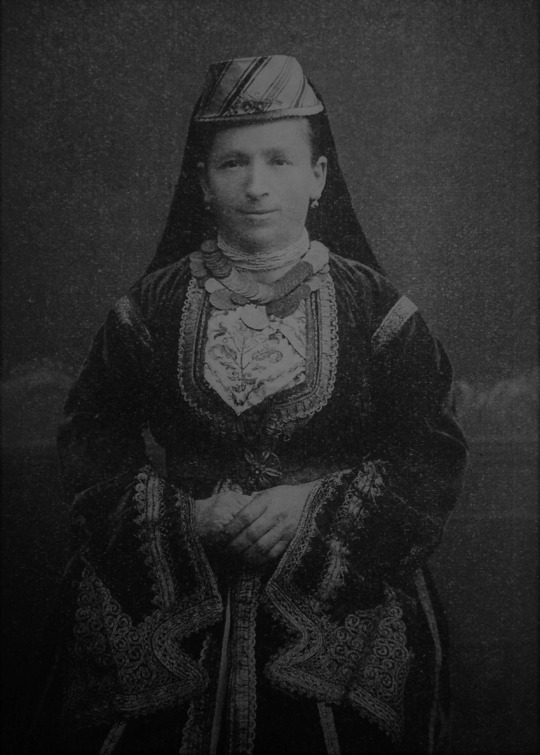

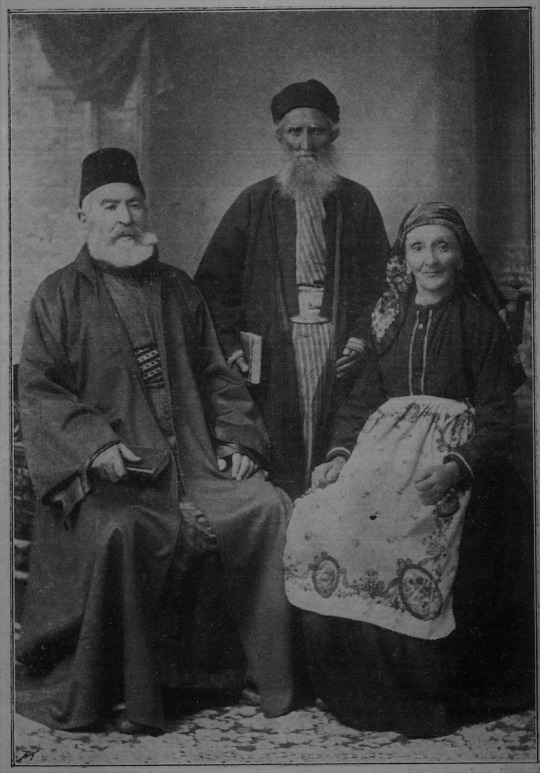

Sephardic Jews from Sarajevo, Bosnia and Herzegovina, 1900s. National Museum of Bosnia and Herzegovina, National Library of Israel, The Austrian Museum of Folk Life and Folk Art
331 notes
·
View notes
Note
Being non Ashkenazi in a country that isn’t Israel sucks so badly. I’m Mizrachi-Sephardi (I know it refers to Minhag at its core, but my family’s Israeli so we interpret these things more through a cultural lens), but mostly Mizrachi. The country I live in has barely any Mizrachi or Sephardi Beitei Knesset in it, and there’s also not much of a Jewish culture outside of Ashkenazi stuff. I want to connect to my heritage, but I can’t even go to the place that my Mizrachi side was built up, or we will literally get executed. I’m so tired of everything being so Ashkie centric in the diaspora, obviously there’s nothing wrong with Ashkenazi stuff but I just wish there was more of a movement for non Ashkie Jewish cultures. I don’t know, it just sucks that right now I can’t really feel comfortable in my community
.
11 notes
·
View notes
Text

Shakshuka - A spicy egg and tomato dish invented by Maghreb Jews in North Africa and adopted all over the Middle East 🥚🍅🍳
#foodglorious-food#foodporn#yummy#foodblogger#foodgloriousfood#lunch#dinner#food#breakfast#eggs#shakshuka#tomato's#maghreb#North African#African Jews#Moroccan#mizrahi jews#mizrahi cuisine#mizrahi cooking#Sephardic Jews#Sephardi#foodblog#foodie#follow foodglorious-food#vieformidable#follow vieformidable#pasta#cheese#brunch
24 notes
·
View notes
Text
#sephardi women#mizrahi women#mizrahi jews#sephardic jews#jumblr#jewish women#women's history month#jewish history#american jewish history
4 notes
·
View notes
Text
Watch "5 Surprising Differences Between Ashkenazi & Sephardic Jews | Big Jewish Ideas | Unpacked" on YouTube
youtube
#Youtube#sephardic#ashkenazi judaism#Sephardic Judaism#ashkenazim#ashkenazi jewish#Ashkenazi jews#Sephardic jews#jews#Israeli#Israel#real Jews#judaism#orthodox judaism#Messianic Judaism#reformed Judaism#conservative Judaism#reconstruction Judaism
2 notes
·
View notes
Text


"Farrakhan, who is Black, was born Louis Eugene Walcott on May 11, 1933 in The Bronx, New York City. He is the younger of two sons of Sarah Mae Manning (1900–1988) and Percival Clark, immigrants from the Anglo-Caribbean islands. His mother was born in Saint Kitts, while his father was Jamaican. The couple separated before their second son was born, and Walcott says he never knew his biological father. Walcott was named after Louis Walcott, a man with whom his mother had a relationship after becoming separated from Percival Clark. In a 1996 interview with Henry Louis Gates Jr., Walcott speculated that Percival Clark, "a light-skinned man with straight hair from Jamaica", may have been Jewish."
"Speaking of his father's white Portuguese parents, the Nation of Islam leader said, "I'm going to tell you something. You really want to know what I think? I think they were members of the Jewish community."
He added: "I believe that in my blood, and not in a bad way. Because when I was a little boy I used to love listening to the Jewish cantors in Boston. They had a program, and every week I would listen. I was struck by the cantor, and I've always loved the way they sing or recite the Torah."
Gates, citing an academic source, says Farrakhan's assertion about his lineage is "highly probable" given that nearly all people of Iberian descent in Jamaica and Barbados are of Sephardic Jewish ancestry.
Farrakhan was born in 1933, the son of Mae Clark, who was from Barbados. He was named Gene after his father, a light-skinned man with straight hair from Jamaica. His father, Gates writes, was a philanderer whom the family rarely saw.
"If in my lineage there are Jews, I would hope that in the end, before my life is over, I not only will have rendered a service to my own beloved community of black people but will also have rendered a service to the Jewish community," Farrakhan was quoted as saying..."


Then there's the founder of the Nation of Islam cult. People still don't know exactly who he was, but one thing is certain: Wallace Fard Muhammad was a prolific con artist.
Theories of origin
Karl Evanzz, in his book The Messenger, postulates that Fard was the son of a Pakistani Muslim, then known as East Indians. He bases this theory on several indications:
Fard spent time at the Ahmadiyya Mosque, a movement prominent in Pakistan and used translations of the Quran from Pakistanis.
The name Fard is a common surname in Pakistan as are other names he bestowed upon his followers such as Shabazz, Ghulam, and Kallatt
Interviews with long-time Nation figures who met him or saw original photos of him such as Ozier Muhammad, Rodnell Collins (nephew of Malcolm X) and Wilfred Little indicate that Fard has Pakistani features
Early teachings from Fard indicated a distrust and disdain for Hinduism
The 2017 book Chameleon: The True Story of W.D. Fard by A. K. Arian studies the origin of the Nation of Islam founder.[129] One theory postulated is that Fard was of Afghan heritage.
The 2019 book Finding W.D. Fard: Unveiling the Identity of the Founder of the Nation of Islam investigates a variety of theories about Fard's ethnic and religious origins, writing: "The people who actually met him, and the scholars who have studied him, have suggested that he was variously an African American, an Arab from Syria, Lebanon, Algeria, Morocco or Saudi Arabia ... a Turk, an Afghan, an Indo-Pakistani ... a Greek ... In an attempt to determine the origins of W.D. Fard, most scholars have relied on his teachings as passed down, and perhaps modified, by Elijah Muhammad. Some have suggested that he was a member of the Moorish Science Temple of America or the Ahmadiyyah Movement. Others have suggested that he was a Druze or a Shiite." Morrow suggests that a background of Ghulat or extremist Shia Islam best fits with what's known of Fard.
Muhammad Abdullah
For decades after Fard's disappearance, Elijah Muhammad maintained that Fard was alive and well. Elijah Muhammad suggested that California Imam Muhammad Abdullah was Fard, though Abdullah himself later retracted this claim. Scholar Fatimah Fanusie has argued that Abdullah was in fact Fard.
Abdullah was reportedly introduced as Fard to boxing legend Muhammad Ali...
#SCIENTOLIGY PROTESR NEWS#MAJOR DOCUMENT LEAK FROM CHICAGO SCIENTOLOGY ORGANIZATION#NATION OF ISLAM CULT JOINS SCIENTOLOGY IN RECRUITMENT#COLUMBIA COLLEGE UNDER THREAT FROM COS SOLICITATIONS#LOUIS FARRAKHAN#JEWISH HERITAGE#SEPHARDIC JEWS#JAMAICA#BARBADOS#ORIGINS OF CHURCH OF ISLAM#WALLACE FARD MUHAMMAD#Muhammad Ali#Malcolm X#Growing Up In Scientology#TrashyV12BMW#SLEUTH OF THE YEAR#Tom Cruise#David Miscavige
0 notes
Text

✡︎Ⓐ[This is a Family text]
Jewish Racism
a Common & Familial & Historical Disease with Strong Resistance to Recovery…
1️⃣Don't Deny your illness.
2️⃣Get Out from behind the safe wall of Anti-Semitism. (Your Main Enemy is within Yourself & your Behavior)
3️⃣Open your Arms of Love & Honesty to all people; …You don't know that the Divine Candles of the Menorah are going to be lit from the flames of the heart of which Human.
⚠️Politicians are taking Advantage of your illness for their own Benefit; ...So, throw Them & their Interests in the Trash.
#jumblr#jews#jewish#judaism#mizrahi jewish#arab jews#ashkenazi jews#sephardim#sephardic jews#sephardi jews#jews of color#jewish culture#jewish history#jewish racism#racisim#anti semitism#israel#black#white#political#war
0 notes
Text
Unsolved Victorian Murders: Benjamin Nathan
The unsolved murder of Benjamin Nathan in 1870 revealed the corrupt politics of 19th century New York and underlying class tensions
Well, you certainly liked my last blog post on Unsolved Victorian Murders. Tales of killings in the 19th century that resulted in no conviction. The murderer got away with their foul deed leaving the police scratching their heads. Trawling contemporary newspapers and police records has yielded some more murder cases where the killer got away. So, let’s do some more Victorian true crime! In this…

View On WordPress
#Albert Cardozo#Benjamin Nathan#death#history#Irish Jewish#Mount Sinai hospital#New York murders#sephardic jews#true crime#unsolved murder#unsolved murders
1 note
·
View note
Text
Unsolved Victorian Murders: Benjamin Nathan
The unsolved murder of Benjamin Nathan in 1870 revealed the corrupt politics of 19th century New York and underlying class tensions
Well, you certainly liked my last blog post on Unsolved Victorian Murders. Tales of killings in the 19th century that resulted in no conviction. The murderer got away with their foul deed leaving the police scratching their heads. Trawling contemporary newspapers and police records has yielded some more murder cases where the killer got away. So, let’s do some more Victorian true crime! In this…

View On WordPress
#Albert Cardozo#Benjamin Nathan#death#history#Irish Jewish#Mount Sinai hospital#New York murders#sephardic jews#true crime#unsolved murder#unsolved murders
0 notes
Photo

AFTER MY FIRST LECTURE on the history of the Jews of Salonica at a Conservative synagogue near Princeton, a perfect stranger with a typical Ashkenazi surname sent me a package. In a handwritten letter, he expressed his appreciation for my “wonderful talk,” but concluded: “I hope that the Ashkenazi strands here can enrich the Sephardic side too.” That “here” referred to the book that accompanied the letter: Sander Gilman’s classic 1986 study, Jewish Self-Hatred: Anti-Semitism and the Hidden Language of the Jews. Did my first piece of fan mail insinuate that the history of the underrepresented Sephardic “side” was impoverished and could not stand on its own? Or that my de-emphasis of the Ashkenazi side amounted to self-hatred? I was so put off by the message surrounding the “gift,” that it took me years to crack the book open.
That piece of mail also reminded me why I pursued the academic study of Sephardic history in the first place: it was, in part, a form of self-defense. I wanted to arm myself with an understanding of the world from which my family came — my grandfather, whom I called nono in Ladino, was born in Salonica, once home to a major Jewish community in the Ottoman Empire and today the second-biggest city in Greece — and also to comprehend and combat the kind of sly prejudice I encountered in Jewish spaces. I had already grown accustomed to Jews — principally white, Ashkenazi Jews — using me as a screen on which to project their own discomfort and ignorance about Jews whose stories they do not know or cannot fathom. At a community-wide Holocaust commemoration in college, one of the organizers insinuated that I had made up the fact that my Salonican-born great-uncle and his family had perished in Auschwitz, since she was a survivor herself and had never met a Jew from Greece.
In another instance, neighbors my own age, who are now rabbis in the Conservative and modern Orthodox movements, knocked on my door one Shabbat morning and asked if I would serve as their “shabbos goy”: “Because, you know, you’re Sephardic . . .” During one of my first visits to a Jewish research institution in New York, a senior colleague found out that my mother is Ashkenazi and retorted: “Aha! That explains your intellectual curiosity,” as if to say that if I were fully Sephardic, I would have no business engaging in scholarly pursuits. A Jewish acquaintance, a baby boomer active in the Reform movement, recently learned of my family background and jokingly, or so it seemed, described “mixed breeds” like me with the derogatory term “mulattos.” A peer of my own generation invoked the “one-drop rule” — another “joke” — referencing the legal system in parts of the United States in the 19th and early 20th centuries that disallowed anyone with a single black ancestor from “passing” as white in the eyes of the law. He referred to my son as an “octoroon,” a term used in slave societies to refer to those with one-eighth African and seven-eighths European ancestry.
There is a Ladino refran, or proverb, that goes: Deshame entrar, me azere lugar (“Let me enter and I will make a place for myself”). I used to think that Sephardic Jews — like many “other” Jews — just needed to have the door opened by the gatekeepers, especially the white Ashkenazi Jewish establishment, in order for their fate to improve. But a seat at the table is not enough for today’s generation. Sephardic identity and culture have largely been swallowed up by Ashkenaziness, by whiteness, by erasures so complete that many of my peers no longer possess a consciousness of what it could mean to be Sephardic today. Those sublimated histories must be reclaimed and those submerged stories raised up.
Confronting the deep-seated and disturbing history of intra-Jewish prejudice is a prerequisite for the empowerment of Sephardic and Mizrahi Jews — and Jews of color — in Jewish spaces, and for a reckoning with the place of most Jews as targets of, and willing and unwilling accomplices to, the structures of white supremacy.
Our white supremacy problem, by Devin E. Naar.
#Sephardic Jews#Mizrahi Jews#Jew-on-Jew prejudice#Oriental Jews#Ottoman Jews#Levantine Jews#Spanish and Portuguese Jews#Jews of color#Devin E. Naar#Ella Ponizovsky Bergelson#white supremacy
1 note
·
View note
Text

Cast of a Purim play in a Sephardic Jewish community, NYC, 1936
📷 credit: Center for Jewish History
#jumblr#judaism#jewish#frumblr#jewish history#jewish art#judaica#purim#chag sameach#chag purim sameach#purim spiel#i love judaism#jewblr#j tag#jew tag#Sephardic#sephardim#sephardi jewish
1K notes
·
View notes
Text
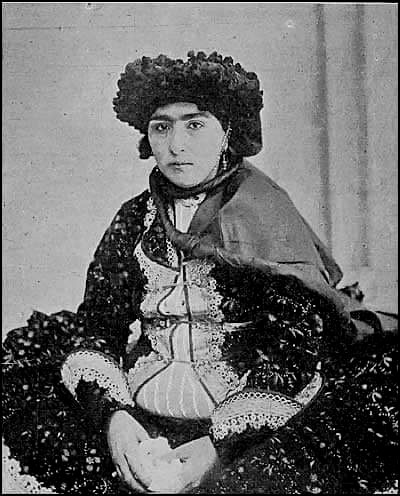
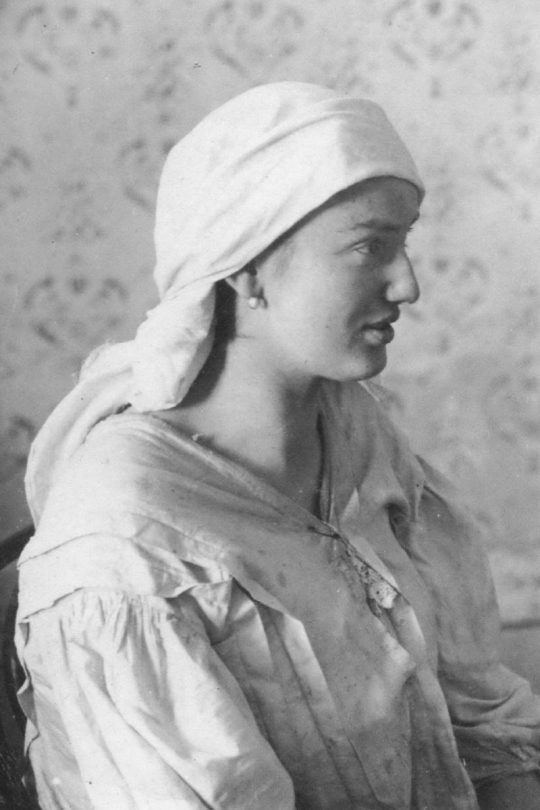
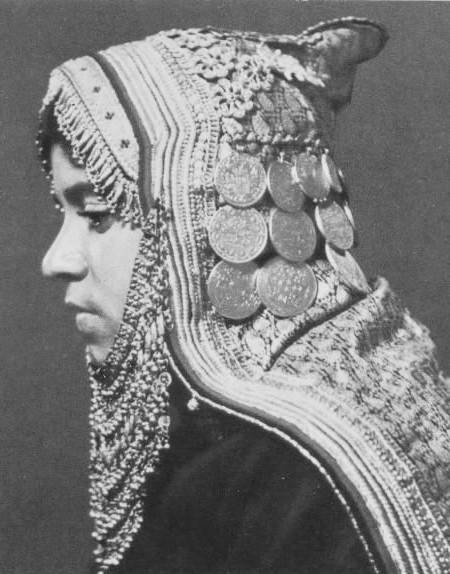


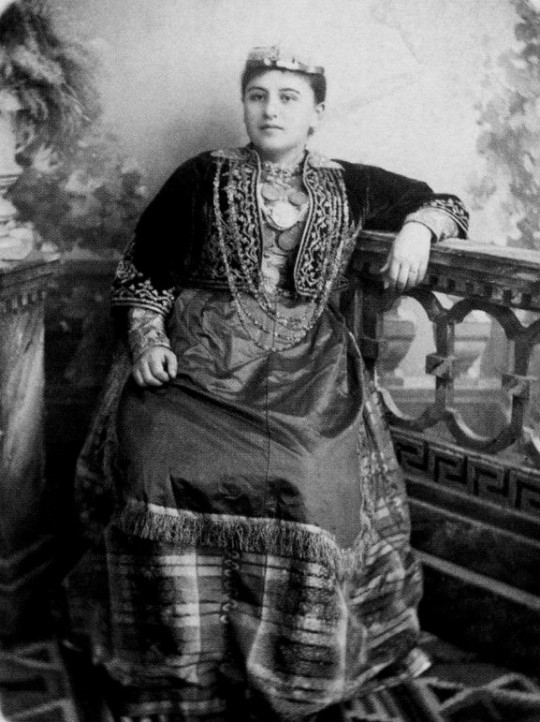

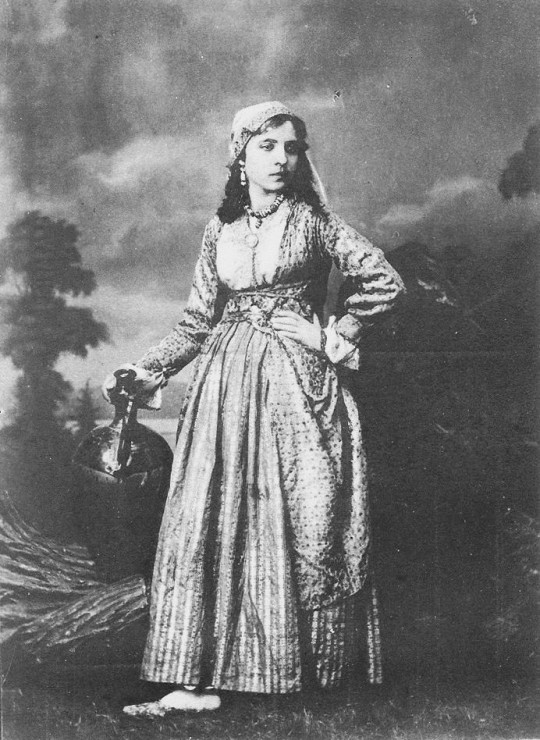
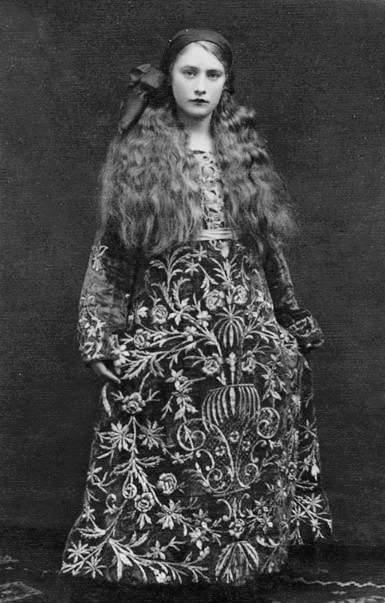
Old photographs of Jewish women II
1. Kurdistan; 2. Volhynia region, Ukraine; 3. Yemen; 4. Bukhara, Uzbekistan; 5. Algeria; 6. Crimea; 7. Cracow, Poland; 8. Thessaloniki, Greece; 9. Bulgaria
#jewish#kurdish#kurdistan#women#ukraine#volhynia#poland#cracow#uzbekistan#bukhara#crimea#karaim#crimean karaites#bulgaria#ashkenazi#sephardic#greece#balkan#yemen#yemenite jews#thessaloniki#algeria#africa#middle east
3K notes
·
View notes
Text
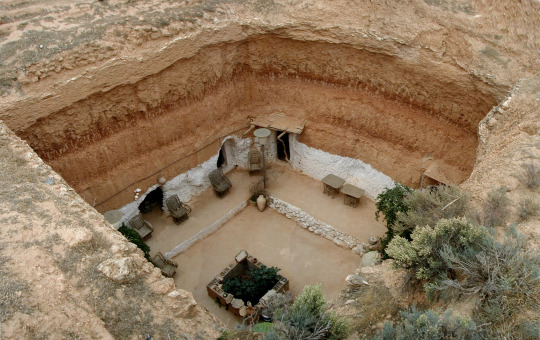
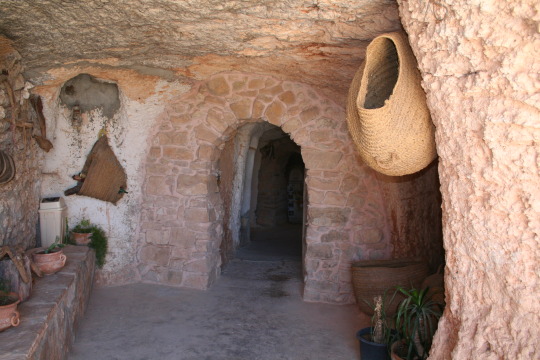

some images from the cave homes of gharyan, libya. communities of jews who made their homes in underground caves have been known in the maghreb since before the 1st century. when spain invaded tripoli in 1510, tripolian jews, both toshavim and sephardic, fled to gharyan and dug out cave homes for themselves. the houses today are occupied by non-jewish libyans or rented out to tourists.
#libya#architecture#jewish#sephardic#amazigh#my posts#a bunch of tripolian jews were captured by the spanish and sold into slavery in sicily so i don't blame them for running away!#interestingly there's also non-jewish traditions of living inside caves throughout mena (i imagine bc of the heat and for protection)#this one just happened to have been built by jewish people#this is where the religion tags get murky#not everything in them is necessarily religious#(such as all the mausoleums i post)
321 notes
·
View notes
Text
The Jews of Iraq are one of the most ancient communities of the Middle East.
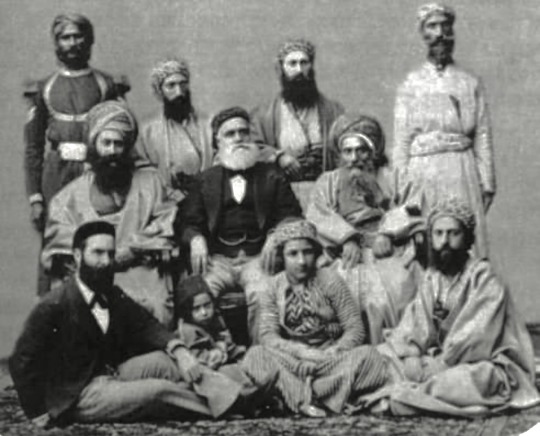
Jews arrvied in Iraq in 586 BCE, and later drafted the Talmud in the Babylonian cities of Pompedita, Nahrdeah, and Surah (Modern day Fallujah).
#secular-jew#israel#jewish#judaism#israeli#jerusalem#diaspora#secular jew#secularjew#islam#Iraq#Iraqi#Iraqi Jews#mizrahi#Sephardic#Sephardi
284 notes
·
View notes
Text
Watch "AishJewish" on YouTube
#youtube#Messianic Judaism#orthodox judaism#mizhani judaism#ashkenazi judaism#sephardic#ashkenazi jewish#ashkenazim#Ashkenazi#Sephardic jews#jewish#jews#aishjewish#Judaism#Sephardic Judaism#reconstruction judaism#reformed judaism#conservative judaism#mizhani jews#mizhani#Ashkenazi jews#hassidic#hasidism#hasidic#Hasidic jews#hassidic jews#hasidic Judaism#channel#YouTube channel
1 note
·
View note